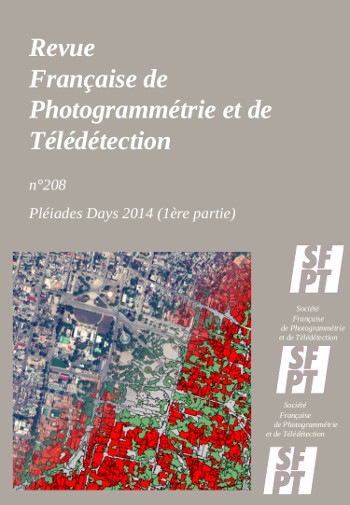Automatic digital surface model generation from Pléiades stereo images
DOI :
https://doi.org/10.52638/rfpt.2014.136Mots-clés :
3D reconstruction, stereo, digital elevation models, remote sensing, pushbroom geometryRésumé
We propose a fully automated stereo pipeline for producing digital elevation models from Pléiades satellite images. The agility of the Pléiades satellites allows them to capture multiple views of the same target in a single pass, enabling new applications that exploit these quasi-simultaneous high-resolution images. Concretely the tri-stereo acquisition modality permits to reduce the occlusions and to cross-validate the observed points. This paper gives an overview of our pipeline, named s2p, and presents some digital elevation models and 3D point clouds built from Pléiades tri-stereo datasets. The data was provided by Airbus DS and the CNES through the RTU program. The particularity of the s2p algorithm is that it permits to use conventional stereo correlation tools, by performing a very precise image rectification of each stereo pair. Although the acquisition system does not fit the pinhole camera model, which is necessary to make the rectification possible, the errors due to the pinhole assumption were shown to be negligible for small enough image sizes. Thus, the whole image can be treated by cutting it into small tiles that are processed independently.
Téléchargements
Téléchargements
Publié-e
Comment citer
Numéro
Rubrique
Licence
(c) Tous droits réservés Carlo de Franchis, Enric Meinhardt-Llopis, Julien Michel, Jean-Michel Morel, Gabriele Facciolo 2022

Cette œuvre est sous licence Creative Commons Attribution 4.0 International.
Les auteurs conservent les droits d'auteur et accordent à la revue le droit de première publication de l'œuvre sous une licence Creative Commons Attribution (CC-BY) 4.0 qui permet à d'autres de partager l'œuvre avec une reconnaissance de la paternité de l'œuvre et de sa publication initiale dans cette revue.






